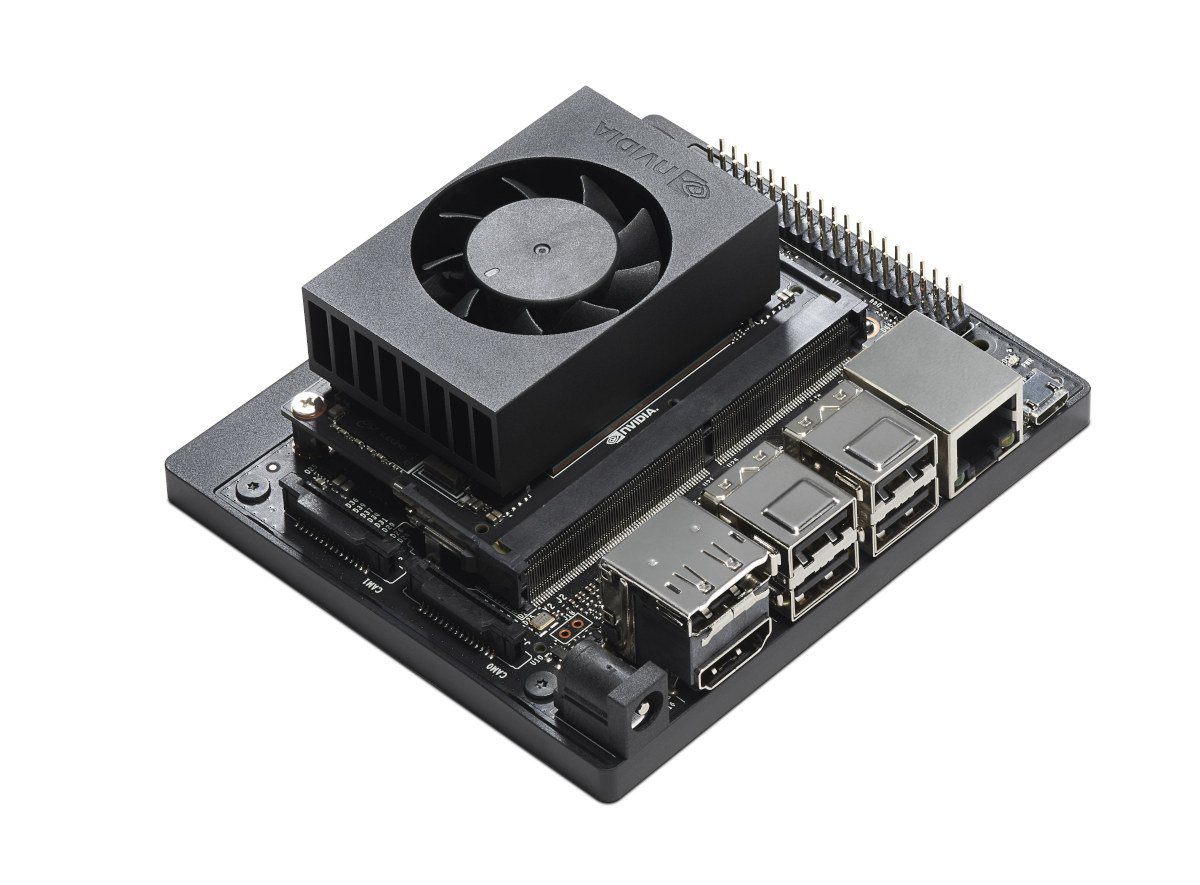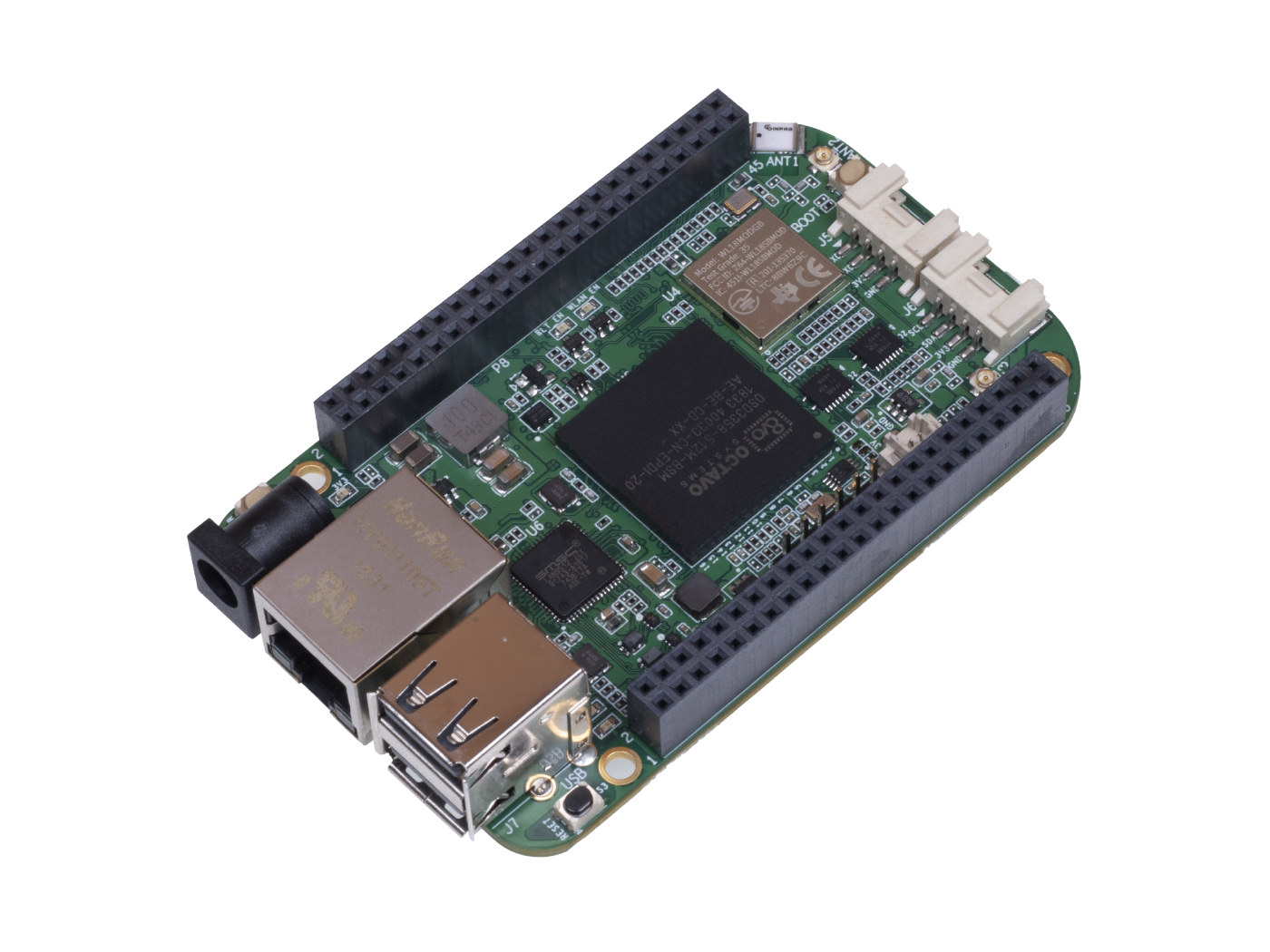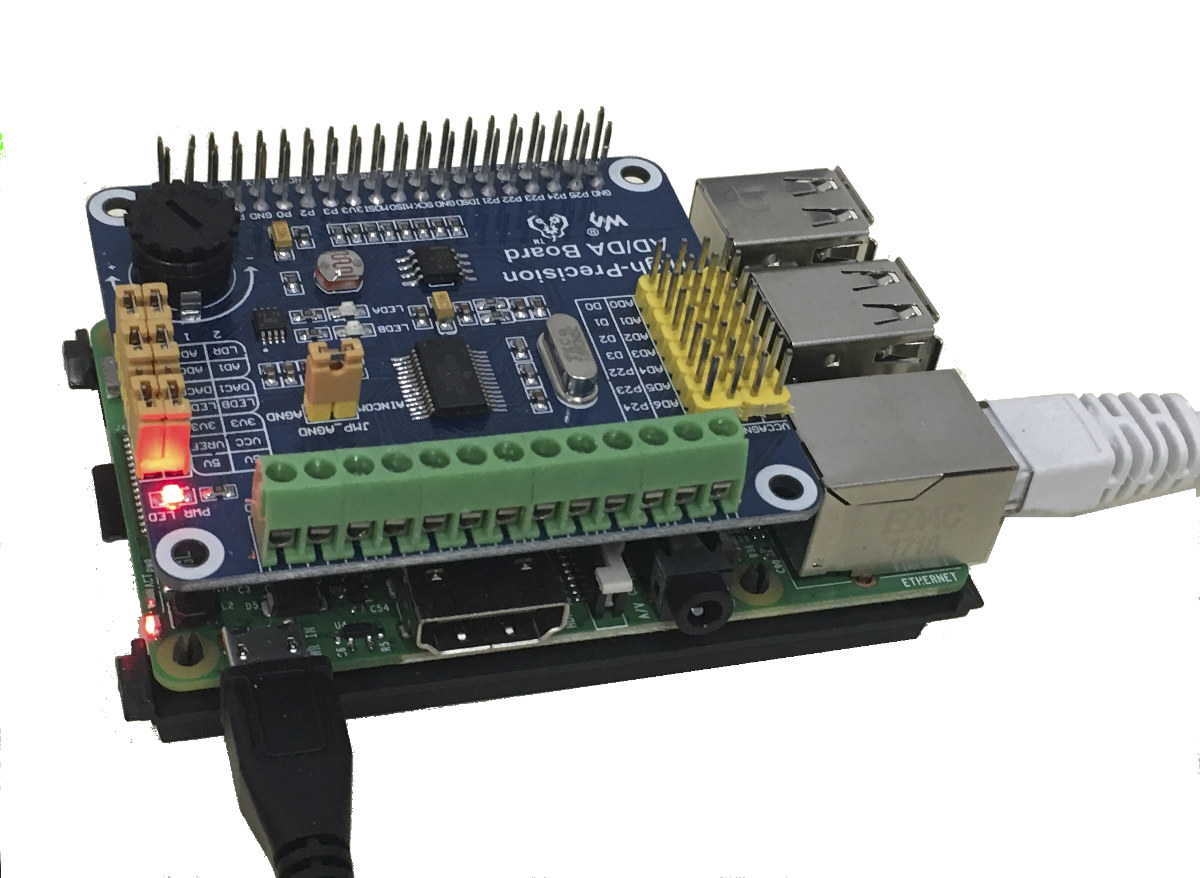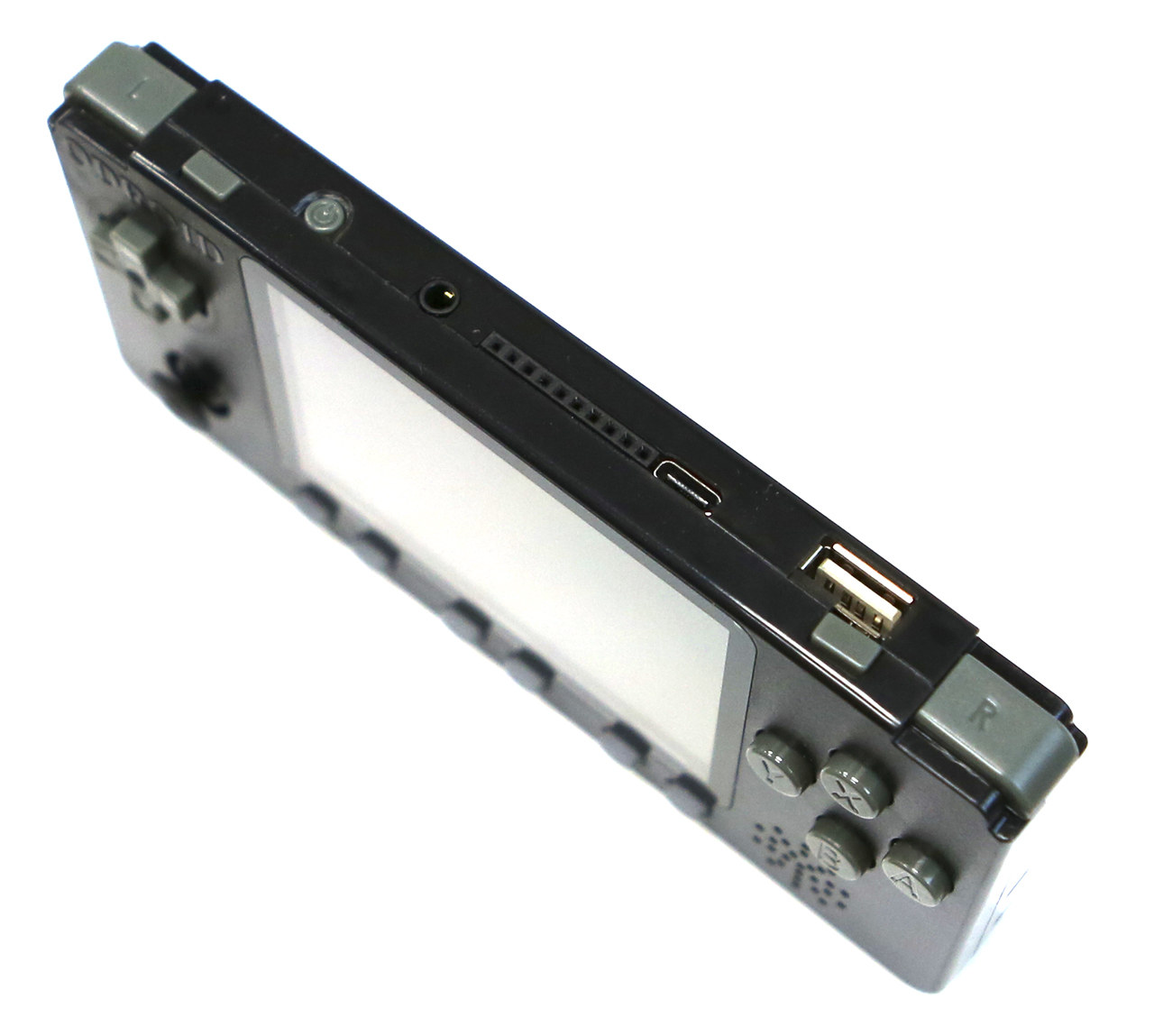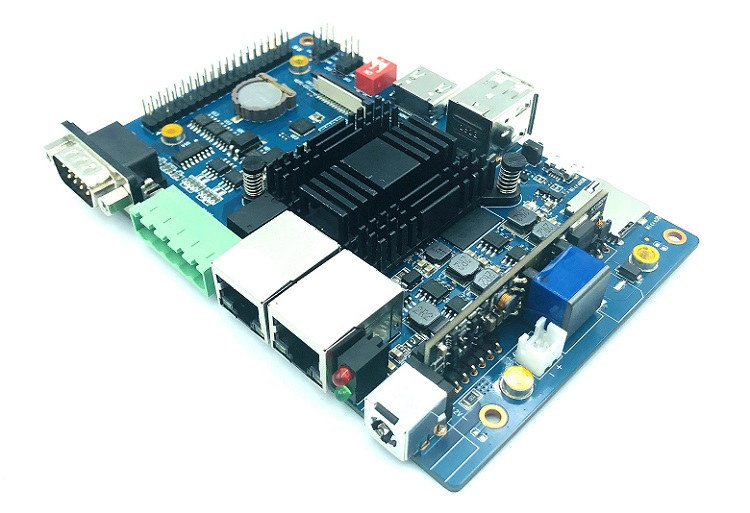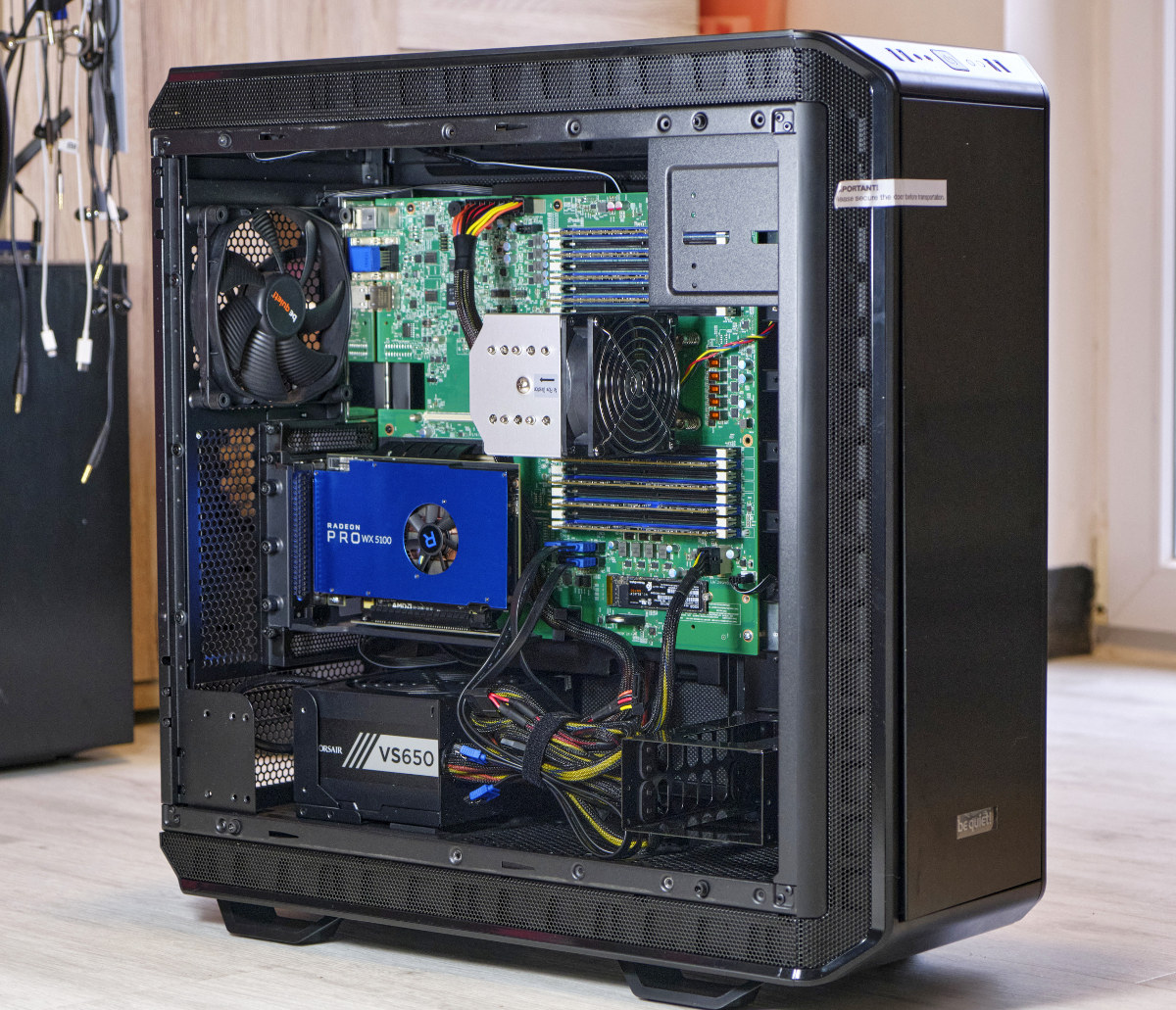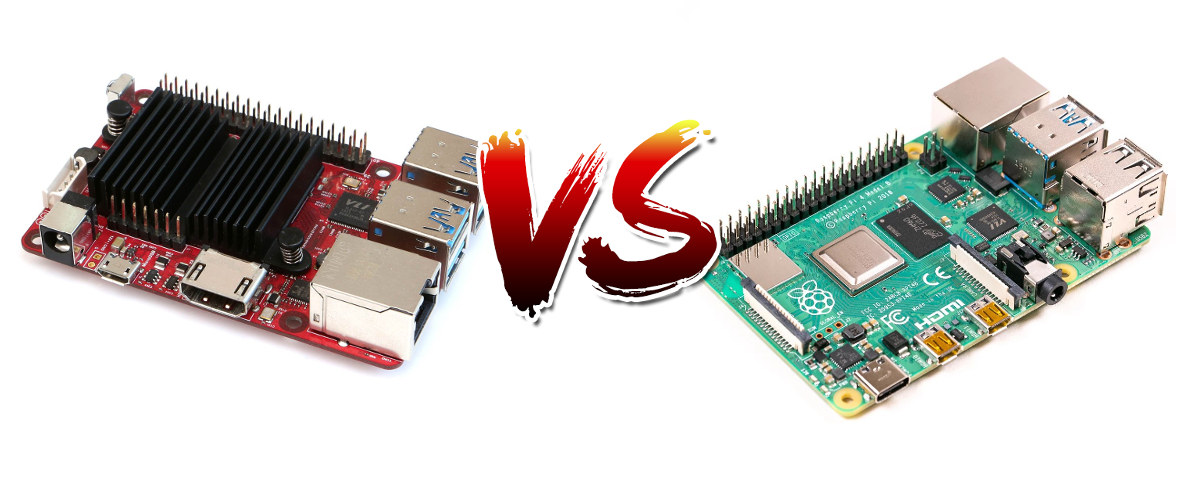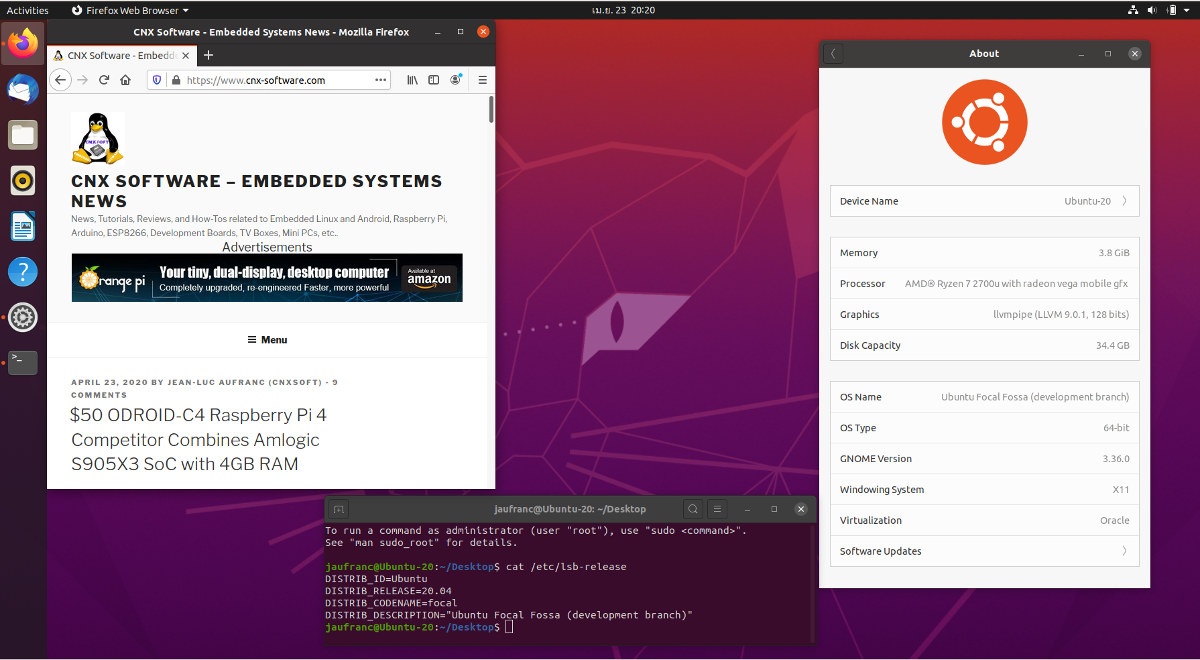NVIDIA Jetson Xavier NX SoM was launched last month for $459. But while some third-party carrier boards were also announced at the time, the company had yet to offer Jetson Xavier NX Developer Kit as they did for Jetson Nano. But as GTC 2020 conference is now taking place in the kitchen of Jensen Huang, NVIDIA CEO, the company had plenty to announce including Jetson Xavier NX Developer Kit as well as “Cloud-Native” support for all Jetson boards and modules. NVIDIA Jetson Xavier NX Developer Kit Specifications: CPU – 6-core NVIDIA Carmel ARMv8.2 64-bit processor with 6 MB L2 + 4 MB L3 cache GPU – NVIDIA Volta architecture with 384 NVIDIA CUDA cores and 48 Tensor cores Accelerators 2x NVDLA Engines 7-Way VLIW Vision Processor Memory – 8 GB 128-bit LPDDR4x 51.2GB/s Storage – MicroSD slot, M.2 Key M socket for NVMe SSD Video Output – HDMI and DisplayPort […]
BeagleBone Green Gateway SBC with Ethernet, WiFi, and Bluetooth Launched for $60
BeagleBone Green Gateway SBC was first unveiled last July as an update to BeagleBone Green Wireless board with Ethernet, and Octavo Systems OSD3358 SiP along with some smaller changes like support for 12V power supply and I2C RTC + battery. The board did however lose two USB 2.0 ports to make space for the Ethernet connector. The board was not quite available at the time, but the good news is that you can now buy BeagleBone Green Gateway for $59.99 on Seeed Studio. Specifications have remained the same as the ones provided for the initial announcement: SiP – Octavo Systems OSD3358 with Texas Instruments AM3358 Arm Cortex-A8 processor @ 1.0 GHz, 2×32-bit 200-MHz programmable real-time units (PRUs), 3D graphics accelerator, 512MB DDR3 SDRAM, 4KB EEPROM, and integrated power management Storage – 4GB 8-bit eMMC on-board flash storage (Kington) + microSD socket Connectivity 10/100Mbps Ethernet (RJ45) WiFi 802.11 b/g/n 2.4GHz + […]
HART-IP Developer Kit Leverages Raspberry Pi 3B+, Off-the-Shelf Add-on Boards for Industrial Field Communication
Have you ever heard about the bi-directional HART communication protocol? I haven’t, but I should probably have as there’s an installed base of over 40 million HART-enabled instruments according to FieldComm Group who owns the protocol and the organization is comprised of 375 corporate members working on process automation instrumentation, systems, and services. HART stands for Highway Addressable Remote Transducer. The organization is also maintaining the more recent (2009) HART-IP IP-enabled version of the HART field communication protocol and just launched HART-IP Developer Kit whose hardware is comprised of a Raspberry Pi 3B+ SBC and off-the-shelf add-on boards mounted on a DIN Rail mount. List of all hardware components: Raspberry Pi 3B+ SBC DSLRKIT Power Over Ethernet PoE HAT (around $20 on Aliexpress) Waveshare Raspberry Pi High-Precision AD/DA (about $30) DINrPlate DIN Rail Mount. MicroSD card On the software side, the system runs Ubuntu MATE 18.04 64-bit preloaded on the MicroSD […]
ODROID-Go Advance Black Edition Gets WiFi, R2/L2 Button, and USB-C Power Input
At the end of last year, Hardkernel launched ODROID-GO Advance portable Linux retro game console powered by a Rockchip RK3326 processor with 1GB RAM, and a 3.5″ color display. While it was fairly well-received, people wished it would not come with a large power barrel jack and included WiFi among a few other requests. COVID-19 also delayed mass-production of the device, but the silver lining is that the company decided to make a new revision 1.1 PCB with a USB-C port for power input, a WiFi module, and R2 and L2 buttons that’s planned to launch soon under the name ODROID-Go Advance Black Edition. ODROID-Go Advance Black Edition specifications: SoC – Rockchip RK3326 quad-core Arm Cortex-A35 processor @ 1.3GHz with Mali-G31 MP2 GPU System Memory – 1GB DDR3L @ 786Mhz, 32 Bits bus width Storage – 16MB SPI Flash for bootloader, Micro SD Card slot (UHS-1 Capable interface) Display – […]
Banana Pi BPI-F2P Industrial Control Board Adds PoE, RS-232 and RS-485 Interfaces
At the end of Last year, we covered Banana Pi BPI-F2S Industrial SBC powered by Sunplus SP7021 “Plus1” SoC with four Cortex-A7 core, an Arm A926 microprocessor, an 8051 core, as well as 128MB to 512MB built-in DDR3 RAM. The company has now unveiled Banana Pi BPI-F2P with the same processor and many of the same features, but with the addition of PoE support on one of the Fast Ethernet ports, as well as an RS-232 DB9 connector, and RS-485 terminal blocks. The expansion connector for an FPGA board found in BPI-F2S is however gone. Banana Pi BPI-F2P specifications: SoC – Sunplus SP7021 “Plus1” with a quad-core Cortex-A7 processor @ 1.0 GHz, one Arm A926 microprocessor, an 8051 core to handle I/Os, and 128MB or 512MB DDR3 DRAM. Storage – 8GB eMMC flash, microSD card slot Video Output – HDMI 1.4 output Camera I/F – MIPI CSI connector Connectivity – […]
Ampere eMAG 64bit Arm Workstation Enables Native Arm Development
Over the last few years, several companies have come up with 64-bit Arm workstation to allow developers to test Arm code natively which may be important to avoid network delays or test applications requiring video or graphics. Those started to become available in 2018 from the relatively low-end 24-core Cortex-A53 Linaro “Synquacer” Developerbox to the much more powerful (and expensive) GIGABYTE ThunderXStation Workstation powered by up to two 32-core ThunderX2 processors. In the fall of 2019, SolidRun started to ship HoneyComb LX2K 16-core Arm Workstation motherboard with and NXP LX2160A 16-core Cortex-A72 processor that offers significantly more performance than the Linaro Box at a reasonable price ($750). While reading a recent Anandtech post with photos of an engineering sample, I found out Avantek was also offering the Ampere eMAG 64bit Arm Workstation powered by an Ampere eMAG 8180 32-core server processor. Ampere eMAG 64-bit Arm workstation specifications: SoC – Ampere […]
Raspberry Pi 4 vs ODROID-C4 Features Comparison
Yesterday, Hardkernel launched ODROID-C4 Amlogic S905X3 SBC as an update to ODROID-C2 SBC launched in 2016. We’ve seen the board can compete with Raspberry Pi 4 4GB board thanks to benchmarks released by Hardkernel, but since those boards are so versatile, meaning they can be used in a variety of applications, it’s impossible to benchmark all use cases. One way to find out which board might be right for your application without going through benchmarks is to look at a list of features for each, and that’s exactly what we’ve done in this post. Let’s get straight to the Raspberry Pi 4 (4GB RAM) vs ODROID-C4 comparison table. Features/Specs Raspberry Pi 4B (4GB) ODROID-C4 Release date 24th June 2019 23rd April 2020 SoC Broadcom BCM2711 quad-core Cortex-A72 @ 1.5 GHz (overclockable to 2.0+ GHz) with NEON, FPU Amlogic S905X3 quad-core Cortex-A55 processor @ 2.0 GHz with NEON, FPU, Armv8 Crypto […]
Ubuntu 20.04 LTS Released – What’s New?
Ubuntu 18.04 “Bionic Beaver” was released nearly exactly two years ago, and that means it’s time for another LTS (Long Term Support) release with Canonical officially releasing Ubuntu 20.04 “Focal Fossa” today. There are a few changes to the graphical user interface, Amazon Icon is now gone, a recent Linux 5.4 kernel is used by default with Wireguard VPN backport, and snap becomes a first citizen in Ubuntu 20.04. This is also the first LTS version of Ubuntu that does not provide 32-bit x86 images. Ubuntu 20.04 ISO files will soon be found on Ubuntu website, and if you already a machine with Ubuntu 18.04 or 19.10, you should be able to upgrade with the following commands:
|
1 2 3 4 |
sudo apt update sudo apt dist-upgrade sudo apt install update-manager-core sudo do-release-upgrade |
It’s possible the release has not been pushed to your mirror, so you may need to wait for a little while, or use the command to install the development release :
|
1 |
sudo do-release-upgrade -d |
[…]


